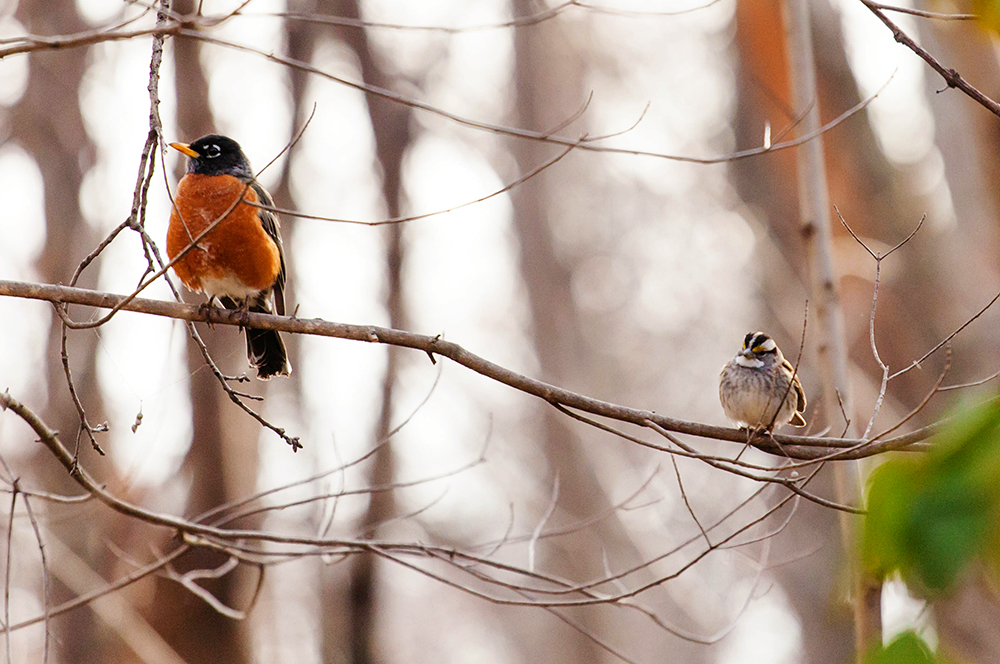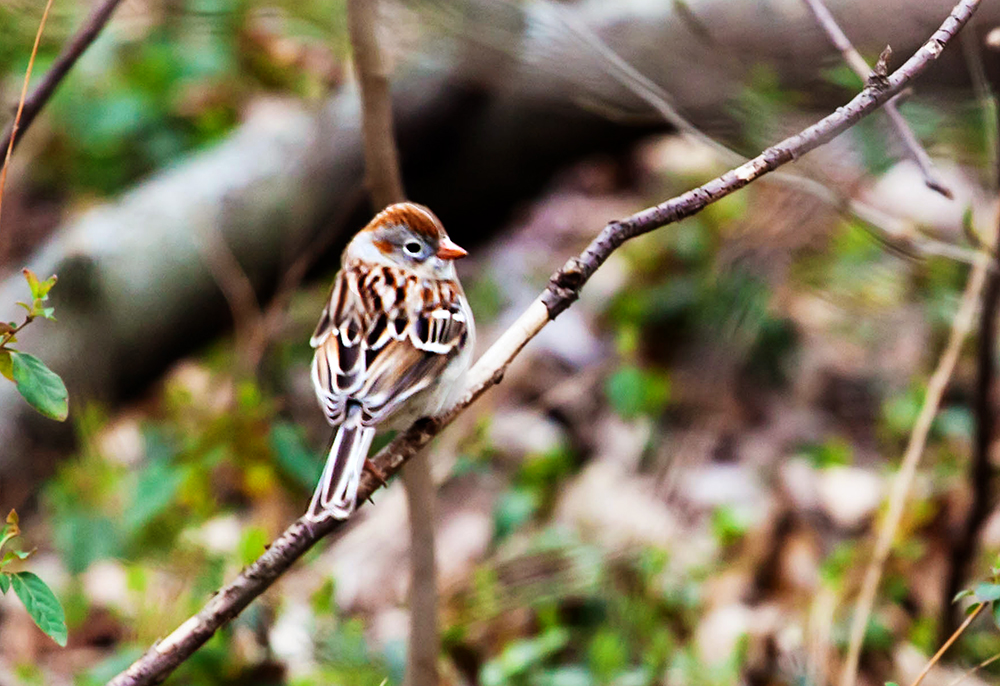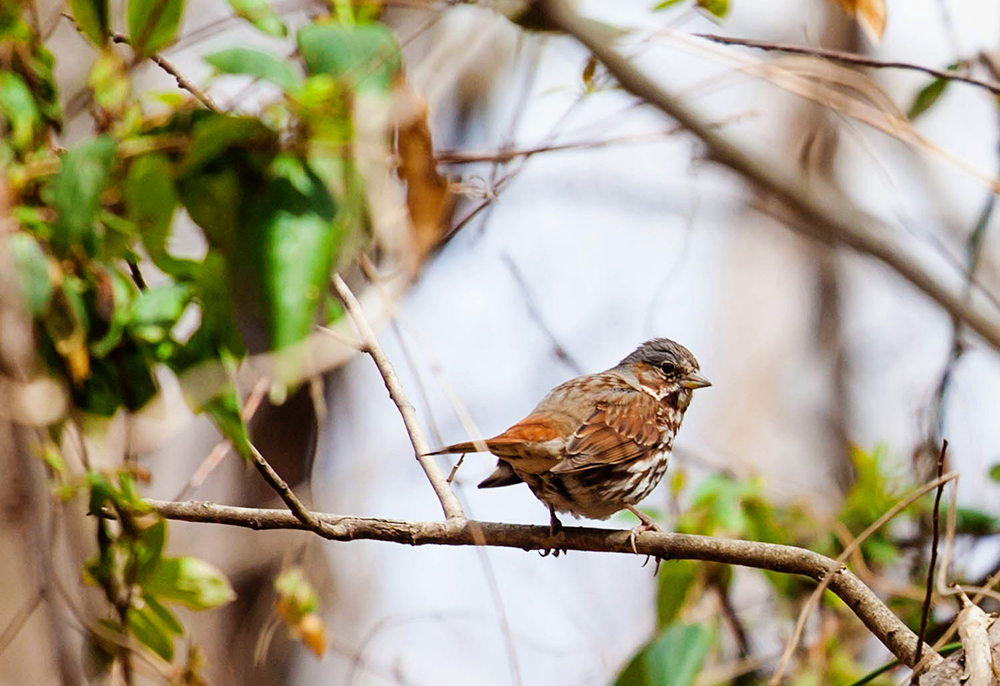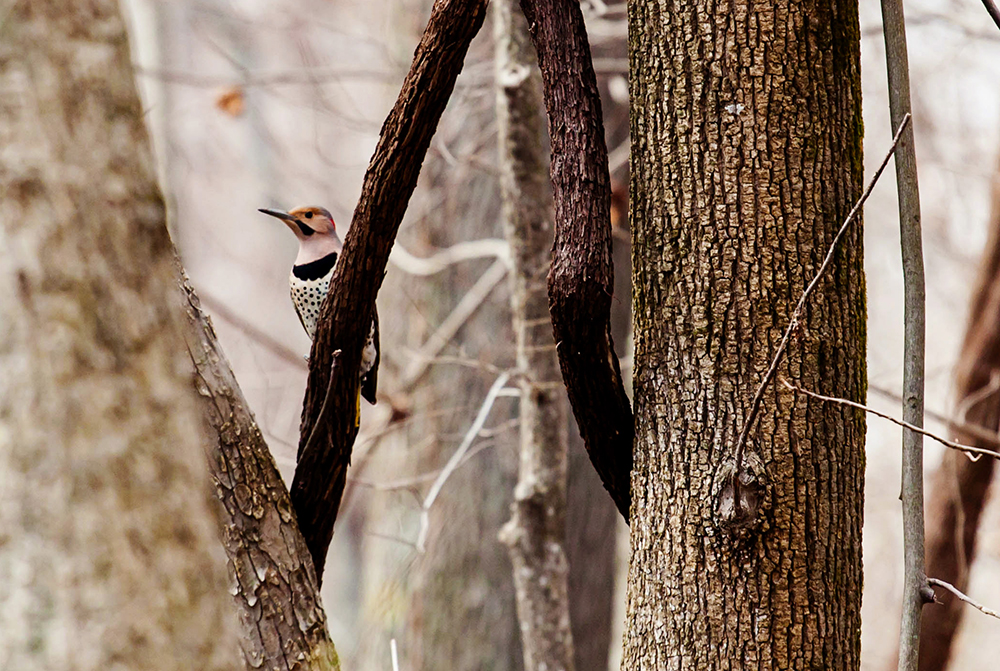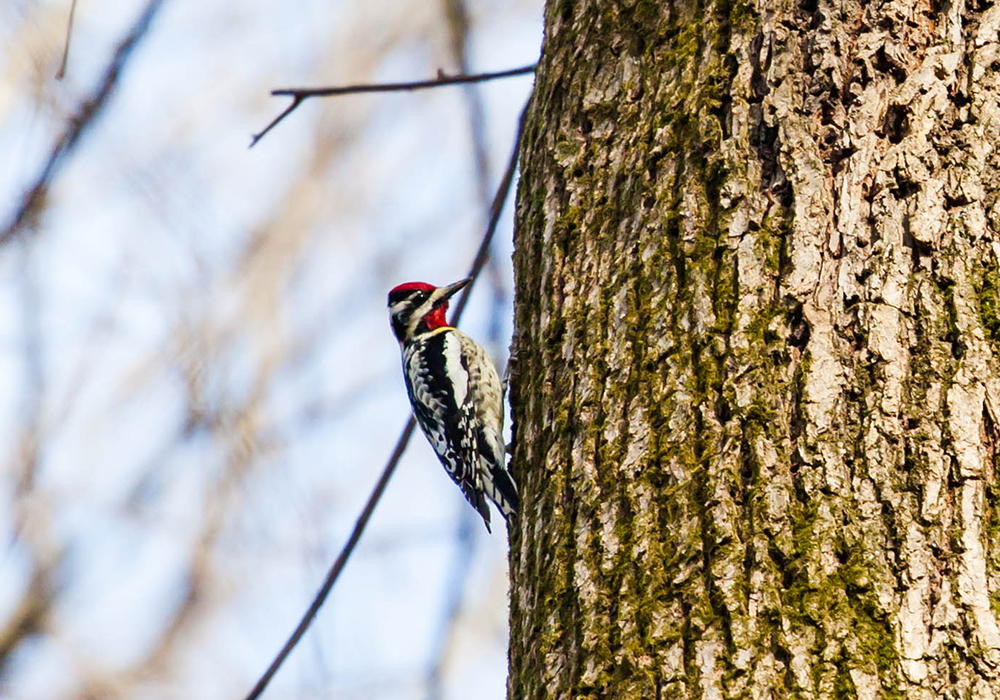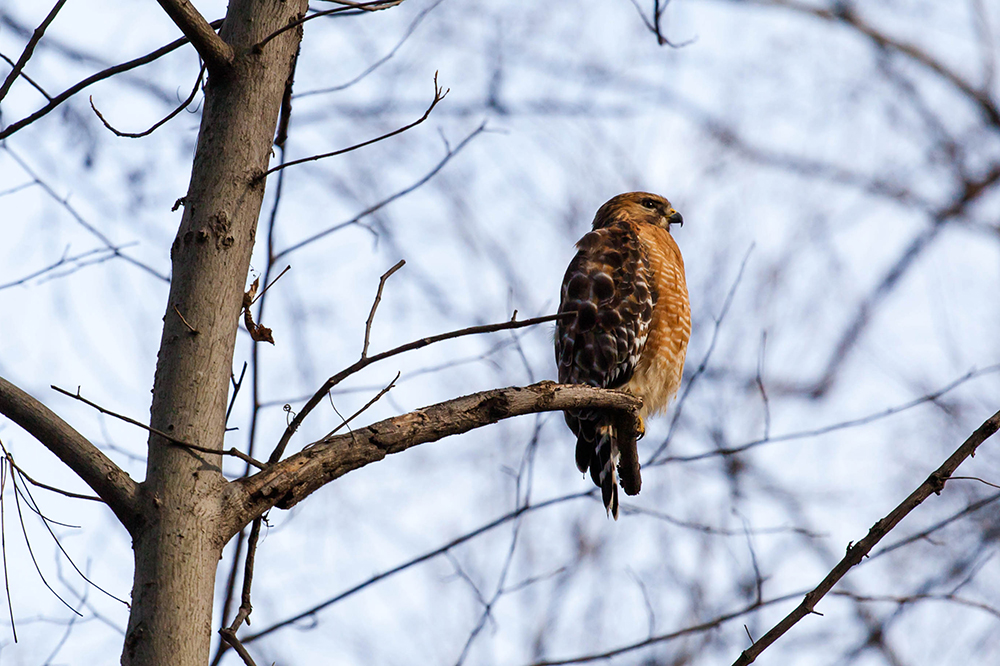More Birds of the Old Forest
Since our last spotlight on the birds of the Old Forest, the weather has warmed up slightly. Starting in April, we should begin to see the spring and summer birds head back into our area. But for now, we’re offering one more look at the winter residents of the forest. As with the last time, I offer my apologies for the less-than-stellar photo quality on some of these–these birds are fast, and they are far away, and for the most part they’re not giant fans of having their pictures taken!
We’ll start with one of my favorite seasonal birds, the winter wren (or, as I affectionately refer to it, “the golf ball”). This is a tiny bird whose tail is so small that it sticks straight up in the air, making the bird appear almost perfectly round. It likes to burrow into brush piles and emerge on the other side. Although it was actually one of the least shy birds I photographed, it moves so quickly in and out of brush that was one of the hardest to capture.
In the last blog post, I felt that the Carolina wren was similarly elusive. This changed as the winter went on, and I started recognizing their calls more easily. By employing my time-honored strategy of just parking myself in one spot and seeing what would venture toward me, I got this very nice shot of a Carolina wren between songs.
Also getting easier to photograph: the golden-crowned kinglet, which I often see bouncing through limbs both low and high. I rarely hear it before I see it, because its voice is so thin and high-pitched, so this is one that often just finds its way into my field of view as a happy surprise.
This robin seems to have no use for its companion white-throated sparrow.
While the white-throated sparrow seems by far to be the most common sparrow in the forest, every now and then I run across something different. This morning I caught a brief, blurry glimpse of a field sparrow (with its distinctive white eyering) foraging the ground near the East Parkway entrance. The forest isn’t exactly field-like, but these sparrows sometimes breed near woodland edges in the winter.
While the field sparrow was casting about amongst a large group of white-throated sparrows, this fox sparrow preferred to remain on its own. They seldom associate with other sparrows, and they often keep themselves hidden in dense vegetation. There are four different types of fox sparrows, and the kind we see in this region of the country is the “red” fox sparrow, which is the most brightly-colored of the group.
While we’re on the subject of little brown birds that don’t like to be seen, here’s a brown creeper I was lucky enough to see hopping up a tree trunk earlier today. These birds are common in the woods, but very hard to pin down because they spend all their time creeping from the bottom of tree trunks up to the top and then starting all over again on the next tree. They’re in search of small insects and spiders, and they use their sturdy tails to support their constant upward motion.
The tufted titmouse is ubiquitous this time of year, chirping its signature “peter-peter-peter” call throughout the woods. It’s a special treat when several of them come to the ground to forage and deploy their low chirps at each other. Follow your ears with this bird and you’ll often find a grouping of them to spy on.
Woodpeckers are a constant presence in the Old Forest, and I’m starting to see the larger ones again after a winter of spotting only the small downy and hairy species. This Northern flicker was visiting low branches in a pair with another bird, and I enjoyed watching the yellow tint under their wings as they flew around. These birds spend a lot of time on the ground, so chances are if you’re walking down a trail and scare up a woodpecker, this is probably it.
Yellow-bellied sapsuckers drill small holes in trees in order to lap up the sap inside. Other birds (including hummingbirds), bats, and small mammals enjoy the fruits of the sapsuckers’ labor and feed at the sapwells themselves. Once you’ve spotted a sapsucker, you may get to watch it for a while. They perch on tree trunks for an extended time while feeding.
Finally, here is a beautiful red-shouldered hawk, one of the easier hawks to spot in the forest. They return to the same nesting sites year after year, filling the forest with their distinctive whistles.
That’s it for today’s adventures in bird-watching. We can’t wait to see who’s hanging out in the trees this spring!




